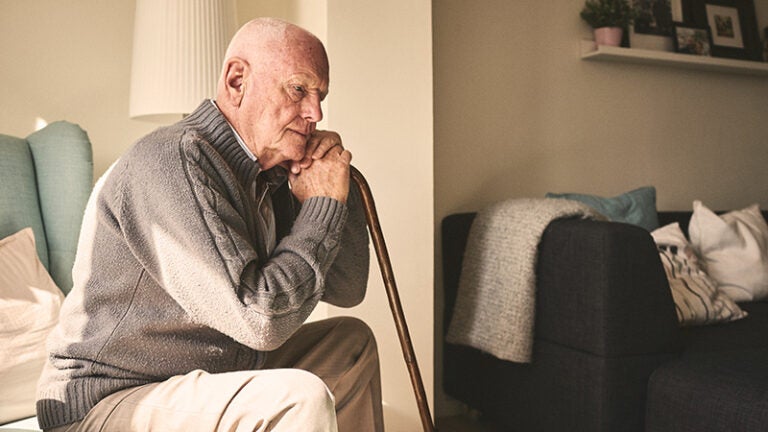
Can loneliness lead to Alzheimer’s disease?
Can loneliness be a risk factor in developing Alzheimer’s disease?
A USC Dornsife clinical psychologist is in the process of finding an answer to this question after receiving a $175,000 grant from the Alzheimer’s Association last year.
Christopher Beam, who joined USC Dornsife’s Department of Psychology this January as an assistant professor, is heading up the three-year research project “Biopsychosocial Pathways from Loneliness to Alzheimer’s Disease.”
He recently hired a postdoctoral researcher from the University of Illinois-Urbana Champaign to assist him.
A new kind of Alzheimer’s disease study
In recent years, social isolation — particularly loneliness — has been studied intensively to understand its relation to physiological dysregulation, cognitive decline and Alzheimer’s disease.

Christopher Beam
One study, “Loneliness and Risk of Alzheimer’s Disease,” published in 2007, concluded that loneliness is associated with an increased risk of late-life dementia.
Beam’s project, however, is believed to be among the first of its kind that will try to identify what mechanisms in the body might explain the possible association between long-term social isolation and Alzheimer’s disease, a neurological disorder in which the death of brain cells causes memory loss and cognitive decline. Its causes are not definitively known, and there is no cure.
The most common form of dementia, Alzheimer’s is the sixth-leading cause of death in the United States and the only cause of death among the top 10 in the U.S. that cannot be prevented, cured or even slowed, according to the Alzheimer’s Association.
Currently, 5.7 million Americans are living with the disease. By 2050, this number is projected to rise to nearly 14 million.
Beam’s research will involve asking older people over a period of time to measure the severity of any loneliness they may be experiencing, and then assessing any possible relationship between feelings of loneliness and dementia.
“There’s been a lot of talk about the loneliness epidemic and there’s much talk out there about how to combat loneliness in an aging population,” said Beam.
Estimates of the prevalence of loneliness are as high as 30 percent in older populations across the globe, with numbers projected to increase by 2030, he said.
Isolation’s physical effects
Although studies have demonstrated that social isolation is associated with increased risk of Alzheimer’s disease, no research has identified physiological pathways through which isolation “gets under the skin” to increase the risk of dementia onset, Beam said.
“This research gap is unfortunate given the benefits social connection has for health and well-being, including protection against [Alzheimer’s disease] risk,” he said.
Beam’s research project will identify whether social isolation is linked to Alzheimer’s disease through physiological dysregulation, which refers to impairment of the body’s regulatory mechanisms, such as those controlling metabolism, immune response and organ function.
Beam’s study will tackle such questions as:
- How does social isolation influence physiological processes found to increase risk of Alzheimer’s disease?
- Are effect sizes of different physiological processes linking objective and subjective social isolation to Alzheimer’s disease different?
- Do the hypothesized mediating mechanisms differ by sex?
“Ideally,” Beam added, “if the hypotheses bear out that loneliness cuts a pathway to Alzheimer’s disease through physiological dysfunction, then one way to potentially delay the onset of dementia or prolong [the lifespan of someone with dementia] is to actually develop some sort of intervention for loneliness.”